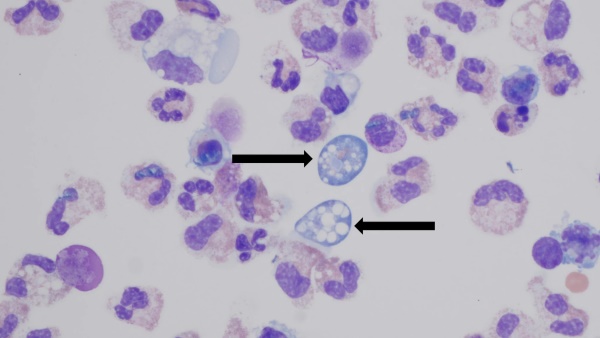The recent tragic case of a 12-year-old boy in Feroke, Kerala, highlights a rare and deadly brain infection called Primary Amebic Meningoencephalitis (PAM). This marks the third case of PAM in Kerala in just a few months, raising concerns about this little-known disease. Let's delve deeper and understand what this "brain-eating amoeba" is and the dangers it poses.
#Gravitas | A rare brain infection caused by a brain-eating amoeba has caused three deaths since the month of May in the state of Kerala in India. @MollyGambhir tells you more pic.twitter.com/gHMATWPsm7
— WION (@WIONews) July 4, 2024
What is Primary Amebic Meningoencephalitis (PAM)?
PAM is a devastating infection of the central nervous system caused by a free-living amoeba called Naegleria fowleri. This amoeba is commonly found in warm, freshwater sources like lakes, rivers, and poorly maintained pools.

Source: Centers for Disease Control and Prevention
The Centers for Disease Control and Prevention (CDC) mentions: “Naegleria fowleri lives in soil and warm freshwater lakes, rivers, ponds, and hot springs around the world.”
“In very rare cases, Naegleria fowleri has been found in poorly maintained swimming pools, splash pads, and other recreational venues. The ameba also has been found in tap water. If water containing the ameba goes up the nose and to the brain, it can cause an infection called primary amebic meningoencephalitis (PAM),” it adds.
How Does Infection Occur?
Infection with Naegleria fowleri occurs when contaminated water enters the body through the nose. This typically happens during recreational activities in freshwater, such as lakes, rivers during the summer month where the temperature of the water is warm.
The amoeba travels up the olfactory nerve to the brain, where it destroys brain tissue, causing severe inflammation and swelling.
The CDC mentions the causes as, “Naegleria fowleri is an ameba that naturally lives in the environment and thrives in heat. It can be found in:
- Warm fresh water like lakes, rivers, and ponds
- Soil, including sediment at the bottom of lakes, rivers, and ponds
- Naturally hot (geothermal) water like hot springs or hot sources of drinking water
- Swimming pools, splash pads, surf parks, and other recreational venues that are poorly maintained or don't have enough chlorine
- Tap water
- Warm water discharge from industrial or power plants
- Water heaters”
“If Naegleria fowleri goes up the nose and to the brain, it can destroy brain tissue and cause a fatal brain infection called primary amebic meningoencephalitis (PAM). PAM typically happens when people go swimming or diving in warm freshwater lakes, rivers, or hot springs,” it adds.
What are the Symptoms of Primary Amebic Meningoencephalitis (PAM)?
Symptoms of PAM can appear within 1 to 2 weeks of exposure and progress rapidly. According to the CDC, these are the symptoms of PAM:
- Changes in smell or taste
- Headache
- Fever
- Nausea and vomiting
- Stiff neck
As the infection progresses, individuals may experience:
- Confusion
- Seizures
- Coma
What is the Treatment of Primary Amebic Meningoencephalitis (PAM) Infection?
While there is no guaranteed cure for Primary Amoebic Meningoencephalitis (PAM), caused by the "brain-eating amoeba" Naegleria fowleri, there are treatment options. The Cleveland Clinic mentions the following treatment:
The primary medication used is the antifungal drug amphotericin B. However, recent successful cases in North America highlight the importance of a multi-pronged approach. These cases involved combining amphotericin B with other medications like rifampin, fluconazole, and miltefosine (a drug used for leishmaniasis).
The most crucial factor for survival appears to be early diagnosis and prompt treatment with these medications. Additionally, lowering body temperature to reduce brain swelling has proven beneficial in some cases.
How to Prevent Primary Amebic Meningoencephalitis (PAM) Infection?
There is no specific treatment for PAM, so prevention is crucial. Here are some key steps to minimise the risk:
- Avoid swimming or diving in warm, freshwater sources, especially those with a history of contamination.
- Use a nose clip while swimming in potentially contaminated water.
- Properly chlorinate and maintain swimming pools.
While rare, PAM is a serious and potentially fatal illness. By understanding the risks and taking preventive measures, we can keep ourselves and our loved ones safe.
READ| What is AstraZeneca Vaccine? Know the Recently Discovered Side Effects of the COVID-19 Antibody
Comments
All Comments (0)
Join the conversation